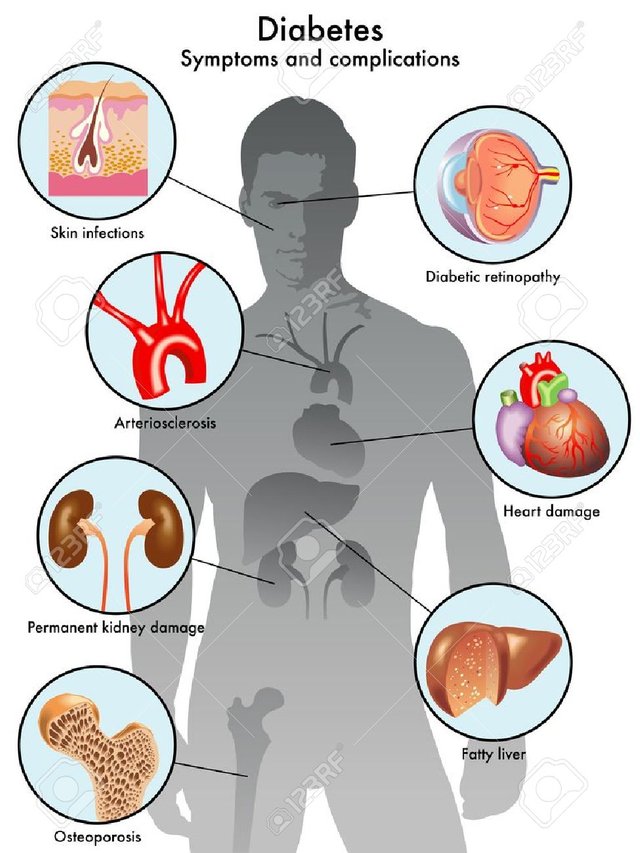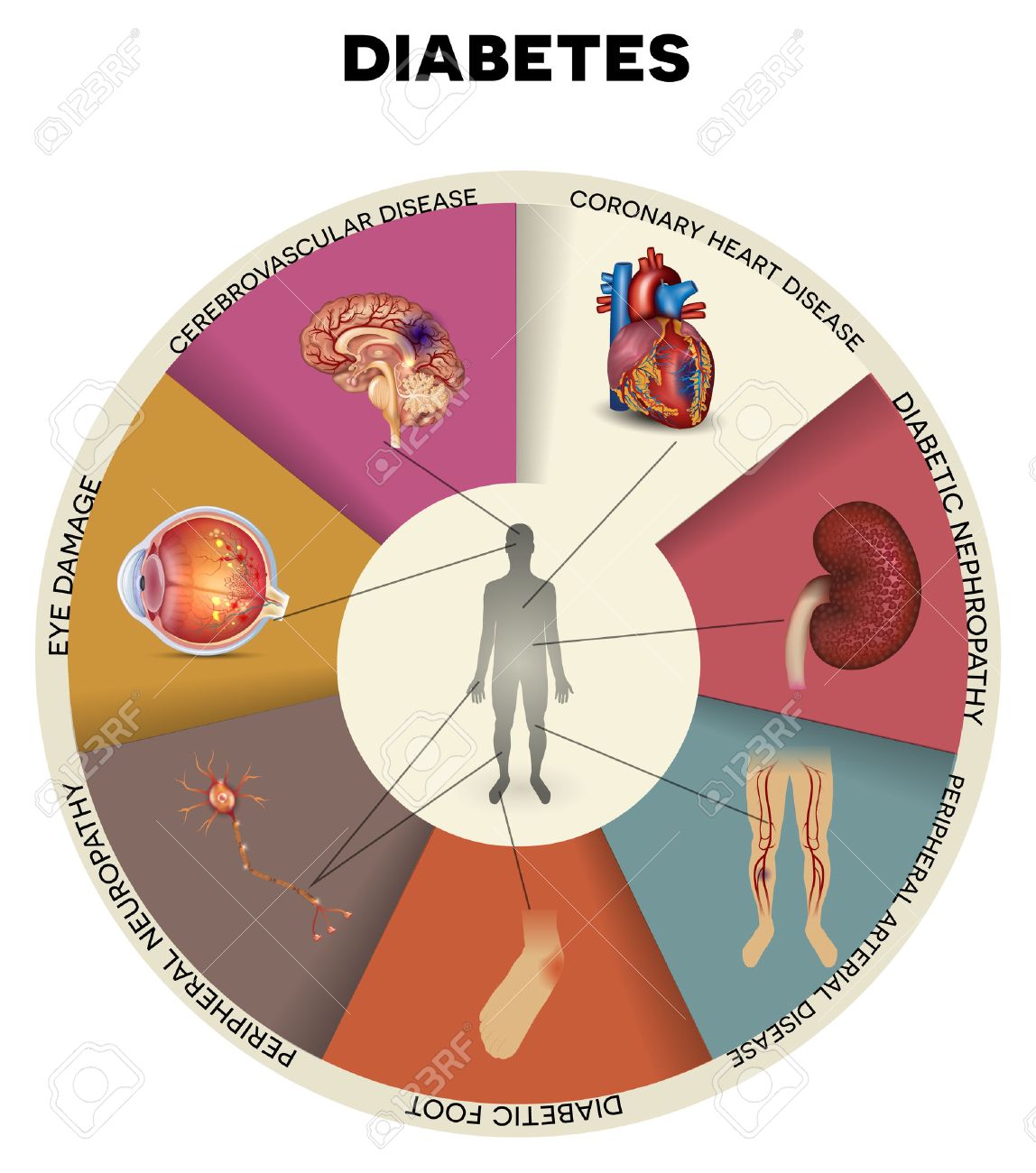
Hello Dear Steemians!



According to WHO estimates, 422 million adults worldwide had diabetes in 2014, compared to 108 million in 1980. The global (normalized by age) prevalence of diabetes has almost doubled since that year, as it has passed from 4.7% to 8.5% in the adult population. This first World Report on Diabetes published by WHO highlights the enormous scale of the problem, as well as the potential to reverse current trends. Countries can take a series of measures, consistent with the objectives of the WHO Global Action Plan on NCDs 2013-2020, to reduce the consequences of diabetes.
Change our diet high in carbohydrates for a healthier because it is not about dying of hunger, rather it is about educating and improving our eating habits.
There are two main types of Diabetes:
Type I: When the body does not produce insulin.
Type II: The most common, the body does not produce or use insulin properly. Without enough insulin, glucose stays in the blood.
What are the main symptoms of Diabetes?
Symptoms of diabetes include:
increased thirst and the urge to urinate
Appetite increase
fatigue
blurry vision
numbness or tingling in the hands or feet
ulcers that do not heal
Weight loss for no apparent reason
The symptoms of Type II diabetes can appear quickly, in a matter of weeks.
In contrast, the symptoms of Type II diabetes usually progress very slowly, over several years, and can be so mild that sometimes they are not even noticed. Many people with diabetes Type II have no symptoms. Some only know they have the disease when health problems related to diabetes arise, such as blurred vision or heart problems.
What causes Type I diabetes?
Type I diabetes occurs when the immune system, which fights infections, attacks and destroys the beta cells of the pancreas that produce insulin.
Scientists think that Type I diabetes is caused by genes and environmental factors, such as viruses, that can trigger the disease. Some studies, such as TrialNet, are focused on identifying the causes of Type II diabetes and the possible ways to prevent or delay the progress or onset of the disease.
What causes Type II diabetes?
Type II diabetes, the most common form of the disease, is caused by several factors, including lifestyle and genes.
Overweight, obesity and physical inactivity
A person is more likely to develop diabetes Type II if not physically active and overweight or obese. Sometimes excess weight causes insulin resistance and is common in people with diabetes Type II. The location of body fat also matters.
Excess belly fat is linked to insulin resistance, Type II diabetes, and heart and blood vessel diseases. To see if your weight represents a risk for the onset of diabetes Type II.
Insulin resistance
Type II diabetes usually starts with insulin resistance, a condition in which muscle, liver and fat cells do not use insulin properly. As a result, the body needs more insulin so that glucose can enter the cells. Initially, the pancreas produces more insulin to cover the increased demand, but over time it stops producing enough insulin and increases blood glucose levels.
Genes and family history
As with Type I diabetes, certain genes can make a person more likely to have diabetes Type II. The disease has a hereditary tendency and occurs more frequently in these racial or ethnic groups:
african american
natives of Alaska
Native Americans
Americans of Asian origin
Hispanics or Latinos
natives of Hawaii
natives of the Pacific Islands
Genes can also increase the risk of Type IIdiabetes by increasing a person's tendency to be overweight or obese.
Diabetes Type I can not be prevented
Type II diabetes can not be prevented. Even doctors can not determine who will suffer from this disease and who will not. No one knows for sure why some children have type 1 diabetes, but scientists believe that this disease bears some relation to genetics. Genes, which are transmitted from parents to children, are something like instructions that determine the physical appearance and functioning of the body. However, to get diabetes, it is not enough to have inherited the genes. In most cases, for a person to have diabetes Type I, there must be another factor, such as the presence of a viral infection.
Type II diabetes is not contagious. Therefore, one can not spread from another person or infect any friend. In addition, consuming too much sugar can not cause Type I diabetes.
Type II diabetes can be prevented
Type II diabetes is different. In some cases, it can be prevented. In Type II diabetes, the pancreas produces insulin, but the body does not respond to this hormone as it should.
Most people with diabetes Type II have overweight problems. In the past, especially adults with overweight problems suffered from Type II diabetes. Today, more children suffer from diabetes Type II, probably because there are more children with overweight.
How can diabetes be prevented Type II?
For example, achieving a healthy weight.
An excess of overweight makes it more difficult for the body to use insulin correctly. Two good options for preventing diabetes are choosing healthy foods and getting enough exercise.
Some measures that can be taken to prevent diabetes Type II
If you want to help prevent Type II diabetes, or just feel healthier in many other ways, follow these steps:
Choose foods that are healthy. Try to eat foods that are low in fat, but contain a lot of other nutrients. These are some good choices: whole grains and breads, fruits, vegetables, milk, yogurt, cheese, lean meats and other protein sources.
Restricts the consumption of fast foods and soft drinks with sugar.
Excessive consumption of fats and sugar can lead to overweight. When you are overweight, you are more likely to develop diabetes Type II. Try to reduce the consumption of fast foods high in fat and sweet drinks, such as soft drinks, juices and iced tea.
Get up and get moving
When it comes to preventing diabetes and being healthy, it is better to stay active than watching television or spending time with video games or electronic games. Moving a lot helps prevent diabetes and maintain a healthy weight, according to height. Staying active can translate into something as simple as walking the dog, running around the garden or playing football with friends. Try to do some activity that puts you in motion every day.
If you have questions about your weight, do not hesitate to ask. If you're worried about your weight, a doctor can help you know if your weight is healthy and teach you how to keep it that way.


This post is resteemed and upvoted by @bestboom
Downvoting a post can decrease pending rewards and make it less visible. Common reasons:
Submit
Hello fellow diabetic!
Downvoting a post can decrease pending rewards and make it less visible. Common reasons:
Submit